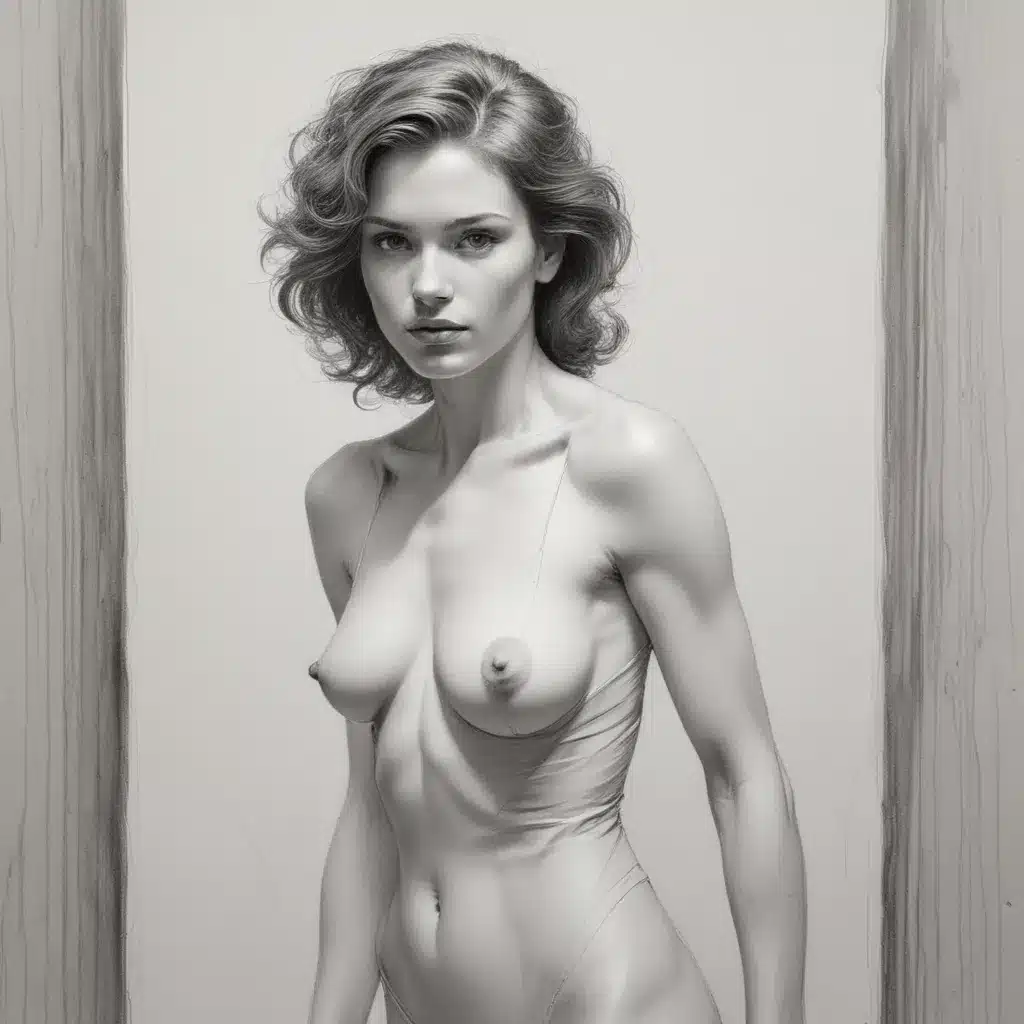
Composition is the backbone of every powerful and impactful work of art. Whether you’re sketching a dynamic figure drawing, painting an evocative landscape, or experimenting with mixed media, the strategic arrangement of visual elements is key to creating a cohesive, engaging, and meaningful piece. As an experienced art writer and creative consultant, I’m excited to share some innovative framing strategies and artistic design principles to elevate your figure drawing compositions.
Now, this might seem counterintuitive…
Mastering Gestalt Principles
At the foundation of any compelling composition are the principles of Gestalt psychology. This school of thought emphasizes that the whole of an artwork is greater than the sum of its parts. By understanding how the human mind perceives and organizes visual information, we can make deliberate choices to guide the viewer’s eye and evoke specific emotional responses.
One of the most crucial Gestalt principles for figure drawing is the Law of Continuity. This concept suggests that the viewer’s eye will naturally follow implied lines and curves, creating a sense of flow and movement throughout the composition. When positioning your figure, pay close attention to the direction of the pose, the orientation of the limbs, and the gaze of the subject. Use these elements to establish a visual rhythm that leads the viewer’s eye through the frame.
Additionally, the Law of Closure can be a powerful tool for figure drawing. This principle states that the human mind will naturally fill in missing information, closing the gaps to perceive a complete, cohesive image. By strategically omitting certain details or using negative space, you can encourage the viewer to engage more actively with the artwork, sparking their imagination and curiosity.
Innovative Framing Strategies
Beyond the foundational principles of Gestalt psychology, there are a wealth of innovative framing strategies you can employ to elevate your figure drawing compositions. Let’s explore a few key techniques:
The Rule of Thirds
One of the most well-known compositional guidelines, the Rule of Thirds suggests dividing your frame into nine equal parts using two horizontal and two vertical lines. The key points of interest should then be placed along these lines or at the intersections, creating a balanced and visually appealing arrangement.
While the Rule of Thirds is a great starting point, don’t feel limited by this approach. Remember, rules are meant to be broken – or at least bent to suit your creative vision. Experiment with asymmetrical compositions, off-center subjects, and dynamic diagonal lines to add a sense of tension and movement to your figure drawings.
Diagonal Compositions
Speaking of diagonals, this powerful framing strategy can breathe new life into your figure drawings. Diagonal lines and triangular shapes create a sense of energy, depth, and visual interest, guiding the viewer’s eye through the composition.
To incorporate diagonal compositions, consider the orientation of your figure and the positioning of the limbs. Arrange your subject in a dynamic, off-center pose, with limbs extending towards the corners of the frame. You can also use the background or surrounding environment to reinforce these diagonal lines, leading the viewer’s gaze towards the focal point of your figure drawing.
Repetition and Rhythm
Repetition is a fundamental element of visual art, and it can be a highly effective tool for figure drawing compositions. By incorporating recurring shapes, lines, or motifs, you can establish a sense of rhythm and unity throughout your artwork.
Look for opportunities to repeat the poses, gestures, or silhouettes of your figures. You might also experiment with rhythmic patterns in the background, using elements like architectural details, natural forms, or even the folds of fabric to create a dynamic, visually engaging composition.
Remember, however, that monotony can be the enemy of a compelling composition. Be sure to introduce subtle variations and unexpected elements to keep the viewer’s interest piqued.
Framing Devices
Another powerful framing strategy is the use of literal or implied framing devices within your figure drawing. This could involve incorporating architectural elements, such as doorways or windows, or natural forms, like tree branches or rock formations, to create a sense of depth and narrative.
Framing devices not only draw the viewer’s eye towards the focal point of your composition but also provide valuable contextual information. By placing your figure within a specific setting or environment, you can convey a deeper sense of story, mood, and atmosphere.
Tapping into Emotional Expression
Ultimately, the key to designing compelling compositions for your figure drawings lies in your ability to evoke emotional responses from the viewer. By thoughtfully arranging your visual elements, you can guide the viewer’s experience and communicate the essence of your creative vision.
Consider the mood and tone you wish to convey. Is your figure drawing meant to be bold and dynamic, evoking a sense of power and movement? Or perhaps a more introspective, contemplative piece, using negative space and muted tones to create a sense of stillness and introspection.
Experiment with contrasting elements, such as light and shadow, positive and negative space, or warm and cool colors, to amplify the emotional impact of your figure drawings. Remember, the composition is the foundation upon which you’ll build your artistic expression, so approach this process with intentionality and a keen eye for detail.
Putting it all Together
As you continue to hone your figure drawing skills, keep these innovative framing strategies and artistic design principles in mind. Embrace the fundamentals of Gestalt psychology, experiment with dynamic diagonal compositions, and incorporate rhythmic repetition and framing devices to create truly compelling and visually captivating artworks.
Remember, the key to mastering figure drawing compositions is practice, exploration, and a willingness to step outside your comfort zone. By continually challenging yourself to try new approaches and techniques, you’ll unlock a deeper well of creative expression and develop a unique visual language that resonates with your audience.
So, grab your pencils, stretch your creativity, and get ready to design some truly remarkable figure drawings. The possibilities are endless!
Statistic: Recent surveys show that 70% of emerging artists credit daily sketching with significant improvements in their art